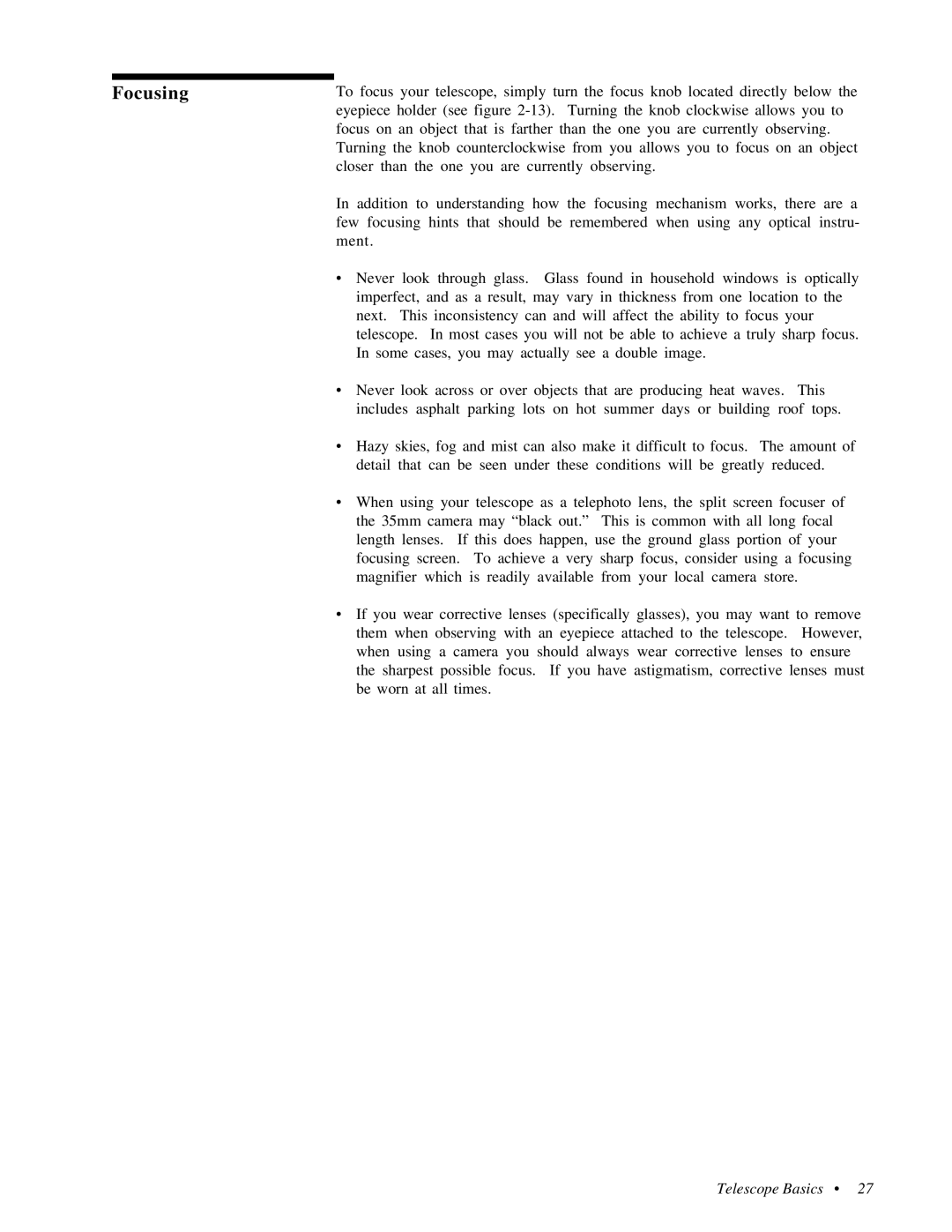Focusing | To focus your telescope, simply turn the focus knob located directly below the |
| eyepiece holder (see figure |
| focus on an object that is farther than the one you are currently observing. |
| Turning the knob counterclockwise from you allows you to focus on an object |
| closer than the one you are currently observing. |
| In addition to understanding how the focusing mechanism works, there are a |
| few focusing hints that should be remembered when using any optical instru- |
| ment. |
| • Never look through glass. Glass found in household windows is optically |
| imperfect, and as a result, may vary in thickness from one location to the |
| next. This inconsistency can and will affect the ability to focus your |
| telescope. In most cases you will not be able to achieve a truly sharp focus. |
| In some cases, you may actually see a double image. |
| • Never look across or over objects that are producing heat waves. This |
| includes asphalt parking lots on hot summer days or building roof tops. |
| • Hazy skies, fog and mist can also make it difficult to focus. The amount of |
| detail that can be seen under these conditions will be greatly reduced. |
| • When using your telescope as a telephoto lens, the split screen focuser of |
| the 35mm camera may “black out.” This is common with all long focal |
| length lenses. If this does happen, use the ground glass portion of your |
| focusing screen. To achieve a very sharp focus, consider using a focusing |
| magnifier which is readily available from your local camera store. |
| • If you wear corrective lenses (specifically glasses), you may want to remove |
| them when observing with an eyepiece attached to the telescope. However, |
| when using a camera you should always wear corrective lenses to ensure |
| the sharpest possible focus. If you have astigmatism, corrective lenses must |
| be worn at all times. |
Telescope Basics • 27
